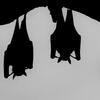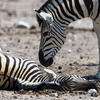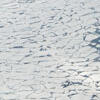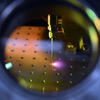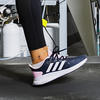You are here
The Science of Cycling
07.25.2016, by
One of best ways for cyclists to optimize their speed is to work on their riding position. The French Cycling Federation recently teamed up with researchers to help athletes improve these cycling positions. On your marks for a performance optimization session with France’s junior cycling team at the Vélodrome National de Saint-Quentin-en-Yvelines.
This research was conducted as a collaboration between researchers at the Laboratoire d’Analyse et d’Architecture des Systèmes (LAAS) of the CNRS, the Centre d’Optimisation de la Performance Sportive (COPS) of the Université de Franche-Comté and the Fédération Française de Cyclisme (FFC).

1
Slideshow mode
Complying with international competition standards, the Vélodrome National de Saint-Quentin-en-Yvelines has a 250-meter long, 8-meter wide track with 23 meters of fixed-radius turns.
Cyril FRESILLON/LAAS/CNRS Photothèque

2
Slideshow mode
Testing protocols give researchers the opportunity to monitor athletes in close to real-life conditions. This cyclist is performing a timed test in the most aerodynamic position possible.
Cyril FRESILLON/LAAS/CNRS Photothèque

3
Slideshow mode
The researcher places embedded activity-recognition sensors, developed by the LAAS, against the cyclist’s lower back. Pelvis movements can have an impact on the body’s position, and thus, on its aerodynamic resistance.
Cyril FRESILLON/LAAS/CNRS Photothèque

4
Slideshow mode
During time trials, head and helmet oscillations also influence the athlete’s aerodynamics. Sensors are therefore also placed on the head.
Cyril FRESILLON/LAAS/CNRS Photothèque

5
Slideshow mode
Together, the set of sensors provides aerodynamic measurements and an image of the cyclist’s position on the bicycle during a test in which the rider has been asked to gradually increase her travel speed.
Cyril FRESILLON/LAAS/CNRS Photothèque

6
Slideshow mode
Using this system, researchers can make dynamic measurements of the cyclist’s position.
Cyril FRESILLON/LAAS/CNRS Photothèque

7
Slideshow mode
Shimano sensors placed on the cyclist’s limbs record the characteristics of her position when she exerts effort. She pedals at a given intensity and at a pace close to the one made during effort.
Cyril FRESILLON/LAAS/CNRS Photothèque

8
Slideshow mode
The software used by the FDJ cycling team lets the researcher monitor in real time the angles between the cyclist’s limbs. By measuring these parameters, it is possible to adjust the bicycle’s settings in order to optimize its aerodynamic resistance on the track.
Cyril FRESILLON/LAAS/CNRS Photothèque

9
Slideshow mode
An athlete stands still in “time-trial” position as he is digitized in 3D with various FARO scanners. He uses a carbon pursuit bicycle with handlebar extenders and an “aero” helmet.
Cyril FRESILLON/LAAS/CNRS Photothèque

10
Slideshow mode
The degree of incline of the cyclist’s torso, close to horizontal, and the choice of helmet, are two fundamental elements that can modify aerodynamic drag. They are known as performance factors.
Cyril FRESILLON/LAAS/CNRS Photothèque

11
Slideshow mode
The 3D image obtained by the scanner makes it possible to run digital simulations that combine modeling with experimentation, and complement wind-tunnel measurements. These techniques help the cyclist determine the choice of position and best equipment.
LAAS/CNRS Photothèque

12
Slideshow mode
The cyclist then attempts to reproduce, in real-life conditions, the so-called “aero” position defined by the 3D models and wind-tunnel measurements.
Cyril FRESILLON/LAAS/CNRS Photothèque

13
Slideshow mode
Sensors placed in the back wheel record the mechanical power built up by the cyclist and the bicycle’s travel speed. The acquired data then makes it possible to calculate aerodynamic resistance.
Cyril FRESILLON/LAAS/CNRS Photothèque

14
Slideshow mode
Lowering the torso is a well-known position used to reduce aerodynamic drag. Yet beyond a certain degree of incline, the power produced by lower limbs can reverse this effect. Sensors allow the observation of how these two variables evolve over time.
Cyril FRESILLON/LAAS/CNRS Photothèque

15
Slideshow mode
A future version of sensors—embedded in fabric—will let researchers continue to make these measurements, but in real-life conditions during actual competitions. Riders are more engaged during competitions, which means that there is a greater variation in positions than during trials.
Cyril FRESILLON/LAAS/CNRS Photothèque
Explore more
Life
Article
11/26/2025
Article
11/24/2025
Article
09/24/2025
Article
09/01/2025
Article
08/07/2025
Physics
Article
07/07/2025
Slideshow
03/19/2025
Article
01/14/2025
Article
04/09/2024
Article
01/24/2024
Cycling
Slideshow
09/30/2021


